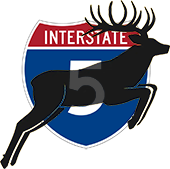A wildlife crossing is an engineered structure that allows safe and sustainable movement of wildlife across roads, highways, rivers and other barriers. They are designed to reduce interactions between wildlife and humans, roadkill, vehicle damage, and human injury, and enable safe passage for animals to access food, breeding grounds and other resources. This "wildlife bridge" will be a fully-vegetated, 150-foot wide overpass, similar to the successful ones built by Conservation Northwest on I-90.
